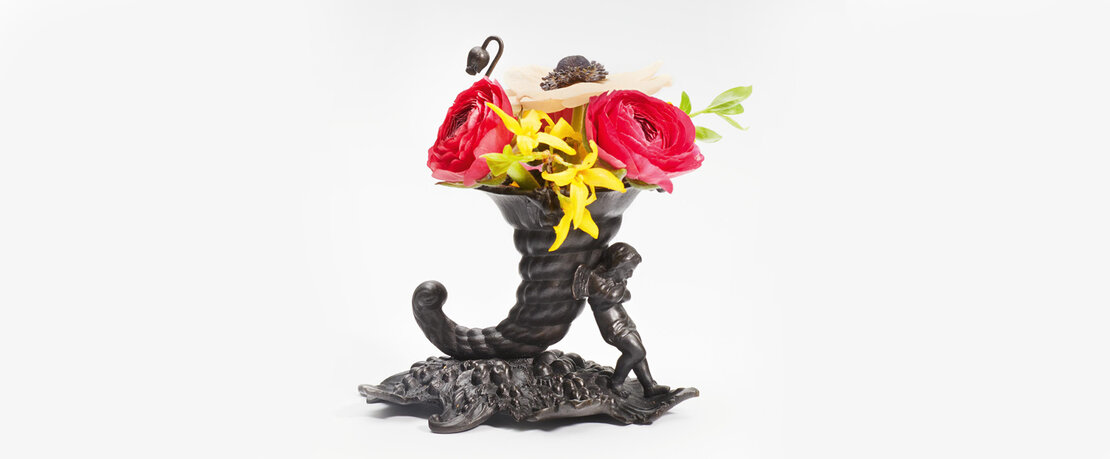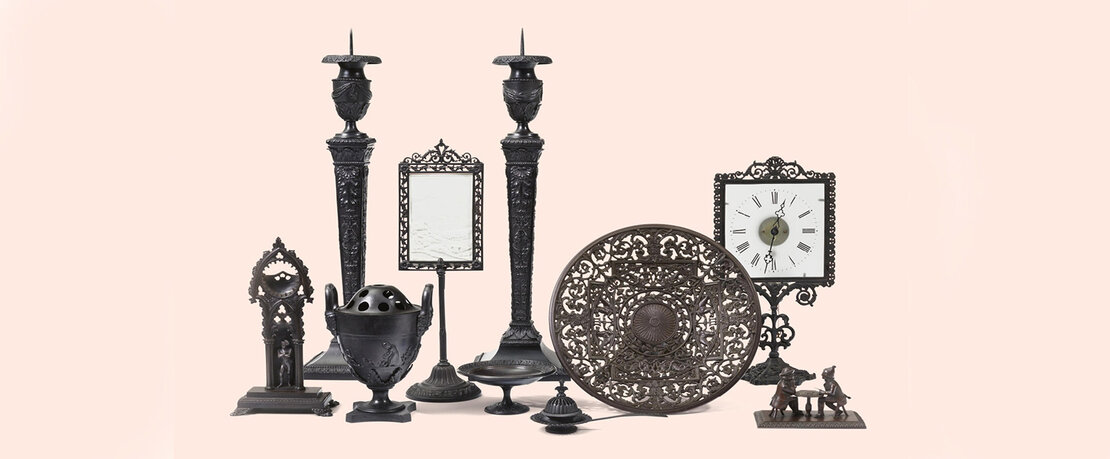Gold I gave for iron
This slogan could be a lyric by a rapper. But those who curiously ask about the origin of this exclamation, open up an entire epoch and a fascinating field of collecting: the art of Berlin iron casting at the beginning of the 19th century. It was the most modern technique of processing iron at the time, made in the greatest variety and precision in the Königliche Eisengießerei (Royal Iron Foundry).

The wars of liberation, the patriotism of the Prussians, Classicism, neo-Gothic, religion and educational ideals, aristocratic residential culture, through to the fashions of the time, can all be perceived through the artworks. The memorable slogan “gold I gave for iron” can be traced back to Princess Marianne of Prussia who is said to have used it in 1813 to urge the citizens of Prussia to give up their gold jewellery to finance the war against Napoleon and to wear instead the filigree jewellery pieces made of black patinated iron with patriotic pride.
The success story of iron as a material for the production of artworks began in 1784 when a sculpture was cast in iron for the first time in the Prussian town of Lauchhammer. The invention of small blast furnaces (cupola furnaces) made it possible to process the raw material far away from the extraction site. The king’s special appreciation for the innovative possibilities in working with iron led to the establishment of royal iron foundries in Gleiwitz and Berlin, and somewhat later in Sayn.
The most famous work from that time is the cast iron monument on the Kreuzberg. Designed by Karl Friedrich Schinkel, it was augmented by individual figures by the sculptors Christian Daniel Rauch, Christian Friedrich Tieck and Ludwig Wichmann: all of these artists shaped Berlin cast ironwork and can be found in the collection to be auctioned.

C. Lith’s passion for collecting began with a fascination for the technique and the acquisition of large parure from the workshop of Johann Conrad Geiss. How the foundrymen enabled the fluid hot iron to flow through the narrowest of channels into the molds pressed into the sand, thus creating the individual parts of the filigree jewellery, is still a mystery today, as is the fragile chasing.
The term “Fer de Berlin” stands for the iron jewellery that is sought after throughout Europe. Although the exchange of designs between the royal iron foundries and the private foundries was common, some jewellery pieces can be clearly attributed by name to the artists Johann Conrad Geiss, Siméon Pierre Deveranne and August Ferdinand Lehmann. The splendid variety, the inimitable technique, as well as the purist materiality make the jewellery desirable still today.
